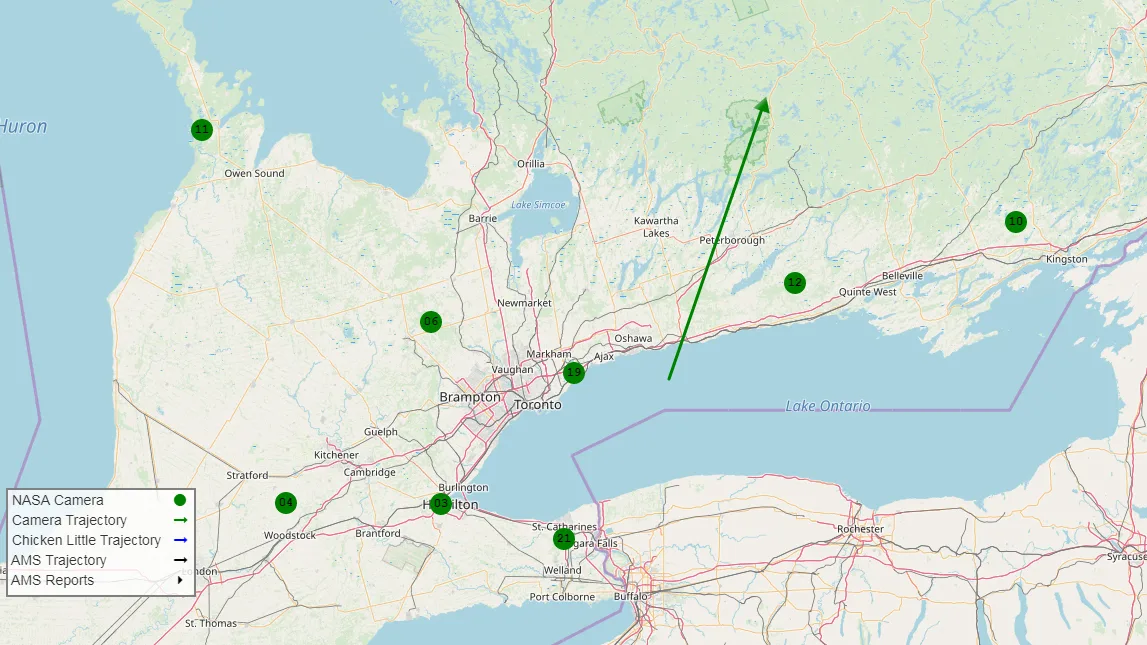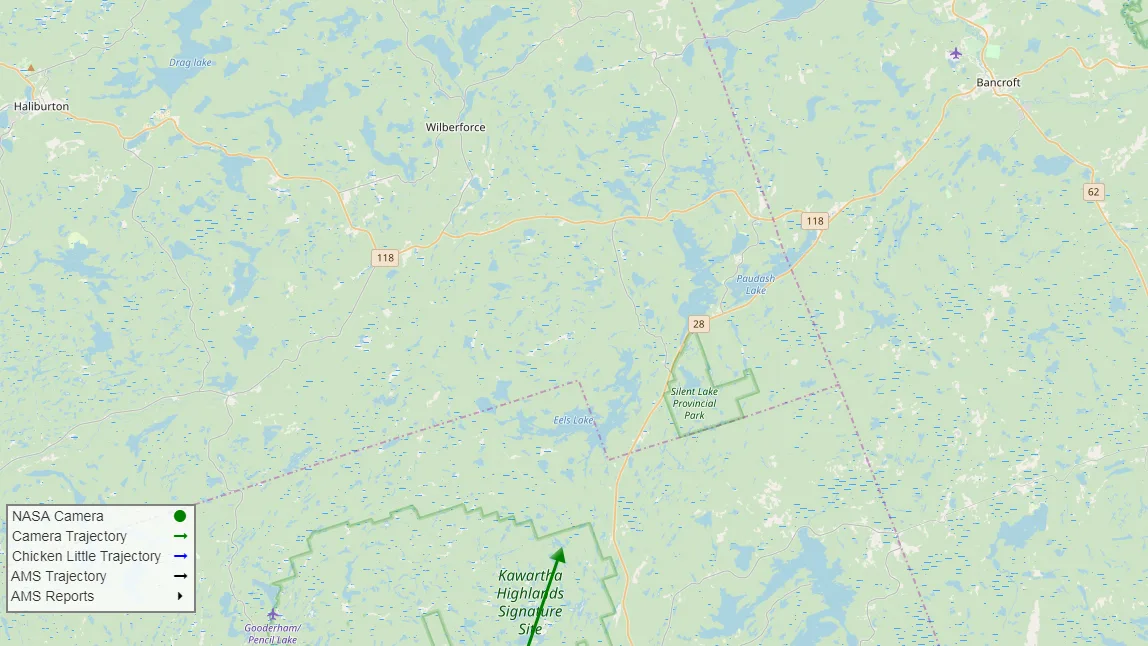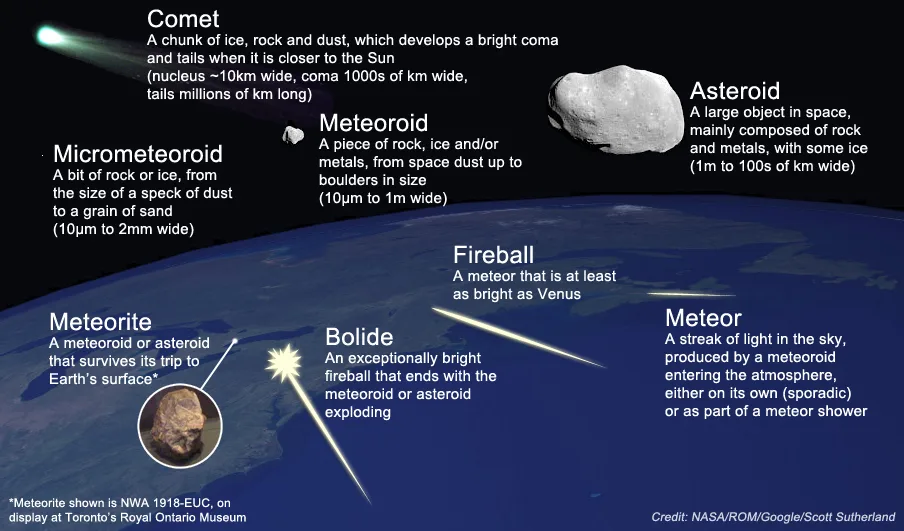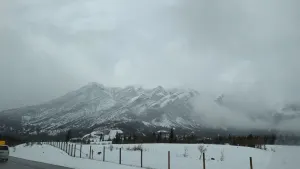
Meteorites may have fallen from bright Ontario fireball
If you live near Bancroft, Ont., you might want to check around for space rocks!
In the early morning hours of Wednesday, July 24, the sky over southern Ontario was lit up, as brightly as the Full Moon, as a brilliant fireball passed overhead.
According to NASA records, the meteoroid that caused this fireball - a roughly 30-centimetre wide rock from space - plunged into the atmosphere with an energy of over half a kiloton of TNT. It then passed to the east of Toronto, all the way past Peterborough, and north to just west of Bancroft, Ontario.
Watch below to see this bright fireball flash through the sky.
Related: Think you've found a meteorite? Here's how to know for sure

Map of southern Ontario, showing the trajectory of the Bancroft fireball. Credit: NASA
According to Western University professor Peter Brown, when the fireball finally winked out - slowed down enough that it wasn't compressing the air to the point it glowed - pieces of the meteoroid may have survived to hit the ground!
"This fireball likely dropped a small number of meteorites in the Bancroft area, specifically near the small town of Cardiff. We suspect meteorites made it to the ground because the fireball ended very low in the atmosphere just to the west of Bancroft and slowed down significantly. This is a good indicator that material survived," says Brown.

Closeup map of the end of the Bancroft fireball trajectory, showing the region where meteorites may have found. Credit: NASA
Thus, if you are reading this article, and you live in the area north of Peterborough, Ontario, to the west of Bancroft, it might be worth your time to head out to look for meteorites.
Peter Brown posted a map of the best place to look, on his Twitter account.
If anyone finds anything they think may be a meteorite, the best way to find out, for certain, is to take it to the Royal Ontario Museum, during one of their Rock, Gem, Mineral, Fossil, and Meteorite Identification Clinics.
WHAT'S GOING ON HERE?
Every day, several tonnes of dust, ice and rock are swept up by Earth's atmosphere as the planet moves through space. Much of this is just tiny grains of dust and ice. A small portion of it is slightly larger bits, like grains of sand, pebbles and gravel - the larger the size, the fewer there are.
Once in a while, maybe a few times a month, something bigger gets in our way as Earth flies around the Sun. These larger meteoroids vary in size, anything from the size of a golf ball, up to giant asteroids that are multiple metres across. The Chelyabinsk asteroid, from February 2013, was probably around 20 metres across!

A primer on meteoroids, meteors and meteorites. Credits: Scott Sutherland/NASA JPL (Asteroids Ida & Dactyl)/NASA Earth Observatory (Blue Marble)
When one of these meteoroids hits the top of the atmosphere, it is travelling at speeds of tens to hundreds of thousands of kilometres per hour, and it very quickly compresses the air in its path, so much so that the air heats up to glow, white-hot! This glowing is the 'meteor' that we see streaking through the air, high above the ground. All the while, the air is pressing back on the meteoroid, causing it to slow down, and sometimes exerting enough force on the meteoroid to shatter it! Once the meteoroid slows to the point where it can no longer heat the air to the point of glowing, the meteor winks out.
Sometimes, with larger objects, this ends very abruptly in an explosion as the meteoroid shatters. This is known as a bolide.
The bigger a meteoroid is, the farther it can plunge into our atmosphere and still survive. Thus, the object, or the shattered pieces of it, can reach the ground, as meteorites.
Related: Want to find a meteorite? Expert Geoff Notkin tells us how!
Meteorites, when they fall to Earth, don't tend to be hot. They're quite cold. When the meteoroids are flying around in space, they tend to cool down to their core, to extremely cold temperatures. So, they can't be identified by burning or smoking.
Here's what to look for, to find a meteorite:
Magnetic: due to having a high metal content, most meteorites will stick to a magnet (ones from the Moon and Mars have less iron, thus won't attract a magnet)
Fusion crust: the outer surface of a meteorite will have a very thin, glossy dark crust, anywhere from grey to brown to black, while the interior can be a much lighter colour
Regmaglypts: some larger meteorites, especially iron ones, will have impressions in the surface, which look similar to a thumbprint pressed into putty
Shape: meteorites tend to have smooth, rounded surface features, but are rarely spherical or symmetrical (and some fusion crusts can have a rough feel to them)
Fragments: larger meteorites frequently break apart as they streak through the atmosphere, and thus are found as irregularly-shaped fragments, with the fusion crust only coating part of their surface
Interior: iron meteorites will be shiny like steel inside, stony-iron will be the same, with small gemstone-like bits embedded in the metal, while stony will either be mostly uniform or will look like tiny spherules all packed together
Meteor-wrongs: there are many Earth rocks, natural and artificial, that can share characteristics of meteorites. Hematite, magnetite, and mining or industrial slag are commonly mistaken for meteorites. If it's not magnetic, or lacks a fusion crust, or has tiny holes in the surface, or looks like it's made up of layers of material, it is very likely a meteor-wrong.
Sources: Western University | NASA | With files from The Weather Network










